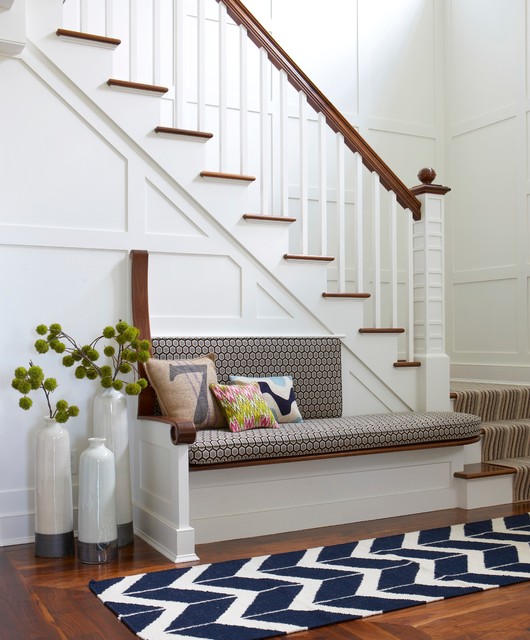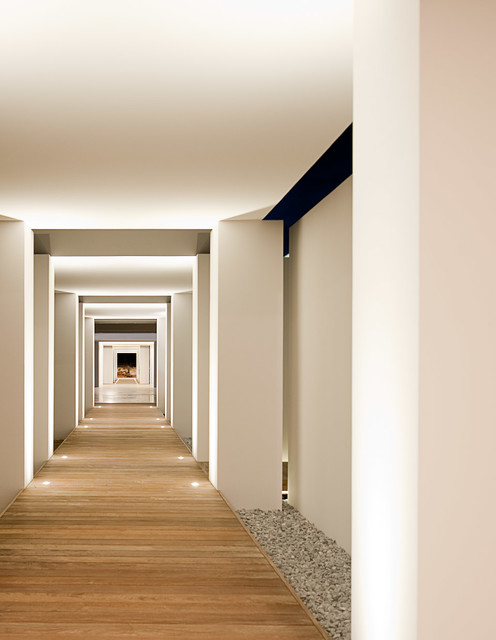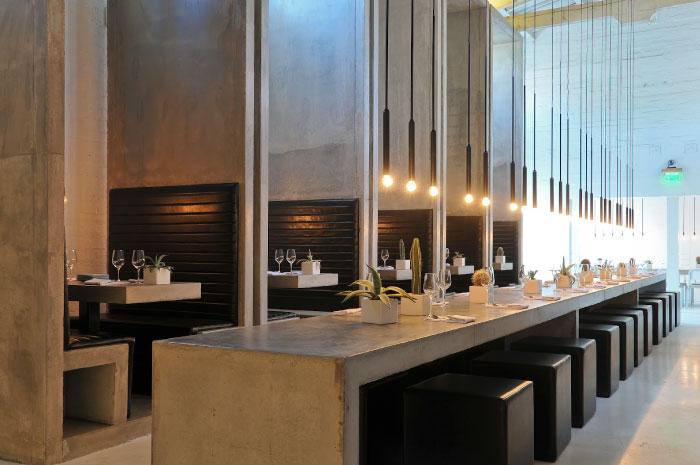In music rhythm is the beat that continually carries along the melody. Incorporating these mechanisms into your interior youll be able to create a sense of.

Interior Design Principles Rhythm Interior Design Principles Principles Of Design Interior Design
Like rhythm in music rhythm in design brings a sense of movement to a space.

. In order to achieve rhythm in your own homes design youll have to think about repetition progression transition and contrast. Rhythm The principle of Rhythm essentially suggests a connected movement between different elements of interior design. In interior design rhythm is all about repetition of design elements that help to create movement within a space.
It carries the eye along a path at a pace that is comfortable for the viewer. Rhythm allows the eyes to move around from one object to another and creates a harmonious atmosphere in a room. Progression is taking an element and increasing or decreasing one or more of its qualities.
Repetition refers to the. To achieve these themes in a design you can use repetition of lines forms colours or textures. The barajas airport by richard rogers and estudio lamela is an excellent example of rhythm achieved through repetition and progression of colour.
The most common transition is an arched doorway or winding path where the eye glides smoothly along a curved line. Rhythm by gradation or progression. Tree branches usually radiate around the trees trunk.
Thats what rhythm does. Interior design should serve as a visual guide for a person to understand a living space and without unity the visual guide will only end up confusing the person. Radiation is a balance around a central point.
Radiation is really cool when used in a single plane like the flooring in a lobby or even the entrance of a target store. Serious interior designers should not stop until they feel the appropriate level of rhythm was achieved within a space. Rhythm may be applied in bold statements that make an obvious suggestion about a path of travel or more subtly applied to move your eye about a space without you even realizing the rhythm is there.
The principles of interior design are balance emphasis rhythm proportion and scale and harmony and unity. You can create rhythm using gradation repetition transition or radiation. There are five flavors of rhythm.
In interior design rhythm is all about repetition of design elements that help to create movement within a space. Rhythm by radiation in interior design. It allows for unity and evolving variety in a design.
It can also be created by progression which is simply a gradual increasing or decreasing in size direction or color. Chevron patterns on both your sofa and wall tapestry a series of similar vases lining a mantle or a stack of books on a shelf. Human beings by our very nature look for patterns.
Unlike repetition or progression the transition tends to be smoother when the eye naturally glides from one area to another. Youve heard designers talk about moving the eye through the space. More 139 People Used More Info.
The proper use of this principle will create excitement and interest within a space. The transition is more difficult to define. See more of radiation rhythm on facebook.
Rhythm in the Landscape. Traditionally there are three types of rhythm you can use in your interior design. Then take a step back.
Dining chairs around a round table radiate around the center of the table. Rhythm sets up those patterns leading the eye to the next point and the next and the next. What is rhythm by transition.
Rhythm The rhythm of a room involves how the elements within it move together. RHYTHM in interior design. Moreover what is radiation in interior design.
Rhythm may be applied in bold statements that make an obvious suggestion about a path of travel or more subtly applied to move your eye about a space without you even realizing the rhythm is there. Principles of Design. It is defined as continuity recurrence or organized movement.
Rhythm can be created with patterns color structure size or texture. Repetition is the simplest way to attain rhythm and can be similarly-themed homeware and. Rhythm created by a gradual change in size or color.
The principles of design relate to how you use these elements. In Interior Design rhythm is all about visual pattern repetition. Rhythm is created through repetition of line form texture and color.
In interior design rhythm is all about repetition of design elements that help to create movement within a space. Progression repetition the repeated use of certain objects or physical attributes of decor elements. Rhythm via Progression Progressing through the room in terms of shapes sizes or colours is also one way to bring a rhythmic feel to the interior.
Rhythm can also be created by progression transition or contrast. 1280 x 720 jpeg 456 кб.

Pretty Color Combination Types Of Couches House Design Interior Design

5 Ways Rhythm Engages Your Eye

5 Ways Rhythm Engages Your Eye

Rhythm By Repetition 2 Achieved By Repeating Color Line Form Or Texture Interior Architecture Design Architecture Geometric Interior Design

Principles Of Interior Design Part 2 Rhythm

How Does Rhythm In Design Engage Your Eyes Your Own Unique Decor

Principles Of Interior Design Part 2 Rhythm

What Is Rhythm In Interior Design Learn To Apply Tilen Space
0 komentar
Posting Komentar